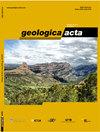萨拉曼卡(西班牙)Calzadilla深成岩体中钙镁石的锆石和尿囊石U-Pb ID-TIMS年龄:地幔衍生岩浆作用和岩浆后亚海泥质叠加的年代测定
IF 2
4区 地球科学
Q2 GEOLOGY
引用次数: 12
摘要
基础至中等高K、高Mg地幔衍生岩石分布于整个伊比利亚地块,在托姆斯穹隆尤为重要,在托梅斯穹隆中,沃镁岩形成了几个储层和小型深成岩体。这些深成岩体中最大、地球化学变化最大的一个是Tormes Dome中的Calzadilla深成岩体,其结晶时间为318±1.4Ma(巴什基尔阶;U-Pb TIMS锆石)。这一年龄表明,沃涅岩深成岩体是在D2晚期伸展变形到D3早期收缩变形(319至317Ma)的过渡过程中侵位的。一方面,由于准等温减压和云母脱水熔融,该地区的大规模伸展导致地壳中广泛的锐钛矿,另一方面,地幔的上升流导致岩石圈地幔中富集域的部分熔融。地壳和地幔熔体同时代的主要原因是伸展。尿囊岩的U-Pb ID-TIMS年龄与Calzadilla沃涅岩的侵位或冷却无关,但它似乎与更年轻的亚盖层叠印有关。275Ma,在中伊比利亚带的规模中,对应于一段热液蚀变期,包括表延岩形成和钨矿化。本文章由计算机程序翻译,如有差异,请以英文原文为准。
Zircon and allanite U-Pb ID-TIMS ages of vaugnerites from the Calzadilla pluton, Salamanca (Spain): dating mantle-derived magmatism and post-magmatic subsolidus overprint
Basic to intermediate high-K, high-Mg mantle-derived rocks occur throughout the Iberian Massif and are particularly important in the Tormes Dome, where vaugnerites form several stocks and small plutons. One of the largest and geochemically most variable among these plutons is the Calzadilla pluton in the Tormes Dome that crystallized at 318 ± 1.4Ma (Bashkirian; U-Pb TIMS zircon). This age reveals that the vaugnerite pluton was emplaced during the transition from late D2 extensional deformation to early D3 contractional deformation (319 to 317Ma). Large-scale extension in the area resulted, on one hand, in extensive anatexis in the crust due to quasiisothermal decompression and mica-dehydration melting and, on the other hand, in the upwelling of the mantle, which induced partial melting of the enriched domains in the lithospheric mantle. The driving reason why crustal and mantle melts were coeval is extension. The U-Pb ID-TIMS age of allanite is not related to the emplacement nor cooling of the Calzadilla vaugnerite, but it seems to be related to a younger subsolidus overprint ca. 275Ma that, in the scale of the Central Iberian Zone, corresponds to a period of hydrothermal alteration, including episyenite formation and tungsten mineralization.
求助全文
通过发布文献求助,成功后即可免费获取论文全文。
去求助
来源期刊

Geologica Acta
地学-地质学
CiteScore
2.50
自引率
6.70%
发文量
13
审稿时长
>12 weeks
期刊介绍:
- Relevant conceptual developments in any area of the Earth Sciences.
- Studies presenting regional synthesis.
- Thematic issues or monographic volumes presenting the results from one or more research groups.
- Short papers reflecting interesting results or works in progress.
- Contributions and results from Research Projects, Workshops, Symposiums, Congresses and any relevant scientific activity related to Earth Sciences.
- Geologica Acta aims to stimulate rapid diffusion of results and efficient exchange of ideas between the widespread communities of Earth Science researchers (with special emphasis on Latinamerica, the Caribbean, Europe, the Mediterranean
 求助内容:
求助内容: 应助结果提醒方式:
应助结果提醒方式:


